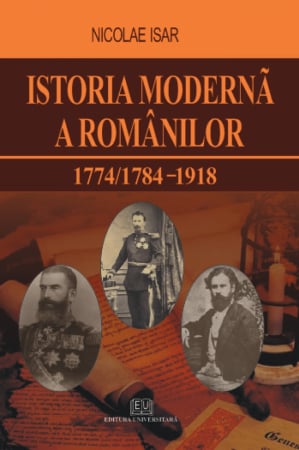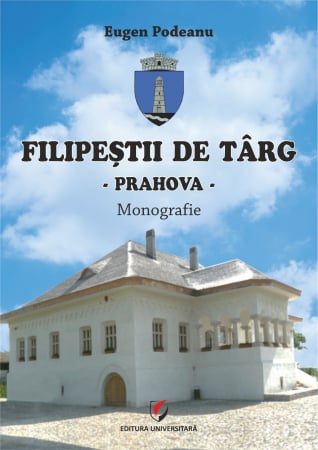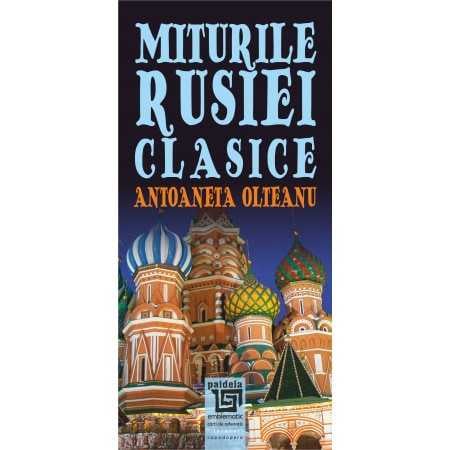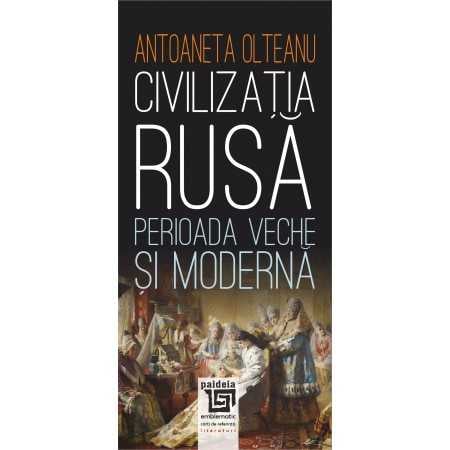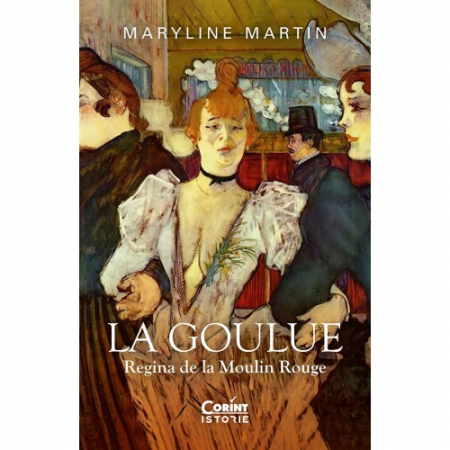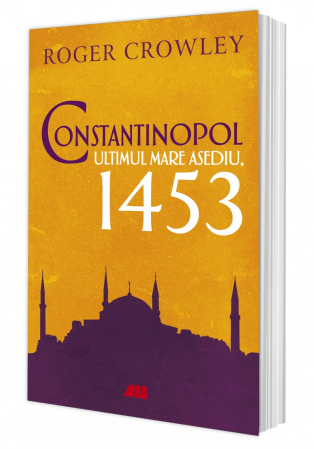Manuscript proposals: [email protected] / 0745 204 115 //// Tracking orders Individuals / Sales: 0745 200 357 / Orders Legal entities: 0721 722 783
ISBN: 978-606-28-1447-2
DOI: https://doi.org/10.5682/9786062814472
Publisher year: 2022
Edition: I
Pages: 314
Publisher: Editura Universitară
Author: Elena Preda, Daniel Dieaconu
Product Code:
9786062814472
Do you need help?
0745 200 357
- Description
- Download (1)
- Authors
- Content
- More details
- Reviews (0)
The races of medieval Moldavia kept the name and pride of landowners until the twentieth century, when they are mentioned by historians, geographers, linguists or toponymists. Even today they are descendants of the racists who hold old urchins and their pride as descendants of free people and masters of their land is the same as the last one a few centuries ago that Mihail Sadoveanu captured so well in his stories.
The research work consisted of bibliographic and archival research, field research to identify old houses specific to the area, old churches and other objects that were photographed, the study, with a general introduction to the problem of raids, followed by a study on racial villages , historical and ethnographic, elaboration of a synthesis regarding the history of raids. The contents that I developed in the historical and ethnographic study were organized as follows:
Part I - Geographical - administrative aspects:
- Short geographical presentation of the area (component / communes and villages);
- Brief physical and geographical presentation of the locality (location, boundaries, neighbors, relief, hydrography, climatic aspects, soils, vegetation, fauna, protected areas, natural monuments, etc .;
- Brief presentation of human geography of the current locality: settlements, population, economy, especially aspects of tourism.
Part II - The historical evolution of the racial communities:
- Brief presentation of ancient history: testimonies of living in prehistory and antiquity, evidence of the continuity of rural / urban communities;
- The first documentary attestations;
- Razor communities in the Middle Ages: Relations with the Reign, the Church, the Enlightenment, with neighbors, clacasii, slave rooms reflected in chancellery documents, writings of foreign travelers, chronicles, other writings; participation in the historical events of the period;
- Razi communities in the modern era until the Great Union: participation in the historical events of the period, contributions to the building and modernization of the Romanian state, the war of integration and the Great Union; relations with other owners and state authorities. Agrarian reforms, riots and other riots;
- The communities from the former villages of the Great Union at the events of 1989/1990: The interwar period: economic life, political participation; The three dictatorships: World War II, the blood tribute, fronts, refugees, the "home front"; communist regime: collectivization, nationalization, nationalization, anti-communist resistance and repression;
- Communities in former villages and the return to democracy.
Part III - Ethnographic contributions:
- Aspects of popular toponymy;
- Demographic considerations of ethnographic interest;
- Types of settlements, courtyards, households, houses, religious places: churches, hermitages, monasteries;
- Food, clothing, folk costumes, military clothing, weapons, means of transport;
- Occupations: animal husbandry, forestry, agriculture, fishing, hunting, etc .;
- Village industry: mills, pives, staves, saws;
- Village crafts: weaving, sewing, fur, ironing, vararit, carpentry, etc .;
- Missing occupations.
Part IV - Aspects of local mythology: eschatological, etiological, mythical, historical, religious legends, legends, stories, traditions regarding the founding of settlements, names of places or patronymics, the appearance of some forms of relief, some curious, the appearance of some buildings, secular or religious, mythical historical events, etc.
Part V - Final considerations on the paper and on how the heritage could be used today: preserved, capitalized by projects, promoted for specific tourism, others.
We consider that the most plausible hypothesis and the one that is verified through the historical documents about raids and raids is that of the descent from the boyars since dismounting. The estates were fragmented and the old boyars worked their land more like peasants. The monasteries and the great boyars rallied from the racial properties, taking advantage of the support of weak or unjust boyars or great rulers. Thus, during Cuza's reform, the razes' properties had been greatly diminished. In Bessarabia, the Russian authorities intervened and hit the Habsburg authorities in the Romanian raid, in Bukovina by arbitrary measures and by routinization. The stories, legends, traditions, historical and ethnographic testimonies that will find their well-deserved place in this volume have remained since the raids.
The research work consisted of bibliographic and archival research, field research to identify old houses specific to the area, old churches and other objects that were photographed, the study, with a general introduction to the problem of raids, followed by a study on racial villages , historical and ethnographic, elaboration of a synthesis regarding the history of raids. The contents that I developed in the historical and ethnographic study were organized as follows:
Part I - Geographical - administrative aspects:
- Short geographical presentation of the area (component / communes and villages);
- Brief physical and geographical presentation of the locality (location, boundaries, neighbors, relief, hydrography, climatic aspects, soils, vegetation, fauna, protected areas, natural monuments, etc .;
- Brief presentation of human geography of the current locality: settlements, population, economy, especially aspects of tourism.
Part II - The historical evolution of the racial communities:
- Brief presentation of ancient history: testimonies of living in prehistory and antiquity, evidence of the continuity of rural / urban communities;
- The first documentary attestations;
- Razor communities in the Middle Ages: Relations with the Reign, the Church, the Enlightenment, with neighbors, clacasii, slave rooms reflected in chancellery documents, writings of foreign travelers, chronicles, other writings; participation in the historical events of the period;
- Razi communities in the modern era until the Great Union: participation in the historical events of the period, contributions to the building and modernization of the Romanian state, the war of integration and the Great Union; relations with other owners and state authorities. Agrarian reforms, riots and other riots;
- The communities from the former villages of the Great Union at the events of 1989/1990: The interwar period: economic life, political participation; The three dictatorships: World War II, the blood tribute, fronts, refugees, the "home front"; communist regime: collectivization, nationalization, nationalization, anti-communist resistance and repression;
- Communities in former villages and the return to democracy.
Part III - Ethnographic contributions:
- Aspects of popular toponymy;
- Demographic considerations of ethnographic interest;
- Types of settlements, courtyards, households, houses, religious places: churches, hermitages, monasteries;
- Food, clothing, folk costumes, military clothing, weapons, means of transport;
- Occupations: animal husbandry, forestry, agriculture, fishing, hunting, etc .;
- Village industry: mills, pives, staves, saws;
- Village crafts: weaving, sewing, fur, ironing, vararit, carpentry, etc .;
- Missing occupations.
Part IV - Aspects of local mythology: eschatological, etiological, mythical, historical, religious legends, legends, stories, traditions regarding the founding of settlements, names of places or patronymics, the appearance of some forms of relief, some curious, the appearance of some buildings, secular or religious, mythical historical events, etc.
Part V - Final considerations on the paper and on how the heritage could be used today: preserved, capitalized by projects, promoted for specific tourism, others.
We consider that the most plausible hypothesis and the one that is verified through the historical documents about raids and raids is that of the descent from the boyars since dismounting. The estates were fragmented and the old boyars worked their land more like peasants. The monasteries and the great boyars rallied from the racial properties, taking advantage of the support of weak or unjust boyars or great rulers. Thus, during Cuza's reform, the razes' properties had been greatly diminished. In Bessarabia, the Russian authorities intervened and hit the Habsburg authorities in the Romanian raid, in Bukovina by arbitrary measures and by routinization. The stories, legends, traditions, historical and ethnographic testimonies that will find their well-deserved place in this volume have remained since the raids.
-
Razesilor Land - Neamt. History and ethnography
Download
ELENA PREDA
DANIEL DIEACONU
DANIEL DIEACONU
PREFACE / 7
PREDOSLOVIA / 13
INTRODUCTORY STUDY ON THE HISTORY OF RACE / 17
CHAPTER I.
"THE LAND OF RAZES" - GENERAL PRESENTATION / 29
CHAPTER II.
GEOGRAPHICAL-HISTORICAL PRESENTATION OF THE LAND OF THE RASES IN NEAMT COUNTY / 57
CHAPTER III.
ETHNOGRAPHIC CONTRIBUTIONS / 195
CHAPTER IV.
TRADITIONAL ARCHITECTURE / 251
CHAPTER V
CONTRIBUTIONS OF HISTORICAL MYTHOLOGY IN THE LAND OF RAZES / 296
PREDOSLOVIA / 13
INTRODUCTORY STUDY ON THE HISTORY OF RACE / 17
CHAPTER I.
"THE LAND OF RAZES" - GENERAL PRESENTATION / 29
CHAPTER II.
GEOGRAPHICAL-HISTORICAL PRESENTATION OF THE LAND OF THE RASES IN NEAMT COUNTY / 57
CHAPTER III.
ETHNOGRAPHIC CONTRIBUTIONS / 195
CHAPTER IV.
TRADITIONAL ARCHITECTURE / 251
CHAPTER V
CONTRIBUTIONS OF HISTORICAL MYTHOLOGY IN THE LAND OF RAZES / 296
The land of Razes extends mainly over a geographical area in Neamt County, delimited between the cities of Piatra Neamt, Targu Neamt and Roman, most settlements being located in the Bistrita and Neamt Subcarpathians, in the depressions crossed by the rivers Bistrita, Cracau and Neamt. This sub-mountainous area is rich in historical evidence that goes back to the time of the dismounting of the country, when, for example, a Laslau came from Transylvania, a faithful descendant of the first voivodes of Moldova. Laslau the globeman was one of the first heroes, the one who was both a warrior and a servant of the law, collecting the ball, that is, the fine or tax from those who had committed injustices. Rewarded for his services, Laslau established his residence not far from the mountains he had passed to the east, under Piatra Cracaului, in Laslaoani, with which he also ruled the Serbs (today, Stefan cel Mare); then, for his loyalty, the voivodes of the country also granted him the privilege of owning an entire estate in the Zeletin Valley, in the south of Moldova, where his nephews, Toader Iucas and Petru Iucas, sons of Sandru de la Iucas, together with their relatives, had to divide their villages in the time of Stephen the Great, in 1495. And the descendants of their descendants were those raids who became legendary, who were judged for the land until the middle of the nineteenth century, when the privileges of origin were revoked. feudal conferred by ranks, in 1856, by the Paris Convention, which laid the foundations of Romanian modernity.
The fortress of Neamt represents the symbol of this area, located in the 14th century in the eastern outpost of Western Christendom, the fortress keeping toponymically the memory of the Germanic warriors. The places of creative memory marked the stages of the historical becoming of the local communities, among the most important being the Warriors, because here, in the White Valley, Stefan cel Mare fought the most tragic war with the Turks, in the summer of 1476, when they many of his boyars perished. Twenty years later, in 1496, the voivode erected a mausoleum church in honor of Archangel Michael, the only one of its kind in which he gathered the bones of his heroes. Other boyar founders are also places of memory for their descendants. In Valeni (the old village of Scheai), in 1519, one of Stefan cel Mare's boyars, the bedfellow Cozma Sarpe, built a church, where his successors were buried. In Branisteni, for a long time, the bones of the chronicler Miron Costin, great logopath of Moldavia, beheaded in 1691, whose name the village bears today, here being the family estate, rested. Another aristocratic foundation, in Dulcesti, built by the great cupbearer Ioan Caraiman, in 1605, later housed the graves of the Hurmuzachi and Sturdza families. And in Bodesti, from 1650, rests Patrasco Basota, great logopath of Vasile Lupu, in the years 1634-1636. But the series of wooden churches built since the second half of the 18th century, marked the specifics of the Moldavian religious architecture, built in Sarata-Dobreni, Corni-Bodesti, Bordea-Stefan cel Mare, Tibucani and other places, many of them being the founders raised by those small landowners, descendants of the great boyars from the first centuries of Moldovan history.
In the absence of legal regulations such as Western ones, land ownership has become so fragmented that many of the many descendants over the centuries have had to relinquish their status as free people, paradoxically, just to become neighbors, that is, peasants. addicts, to lead a carefree life of office, of taxes that weighed on their piece of land. And this land crisis worsened in the second half of the 16th century, when, not coincidentally, around 1580, the first documentary mentions of the term peasant appeared at the same time as razes, when the razes were grandchildren, great-grandchildren and great-grandchildren of to the great boyars of the fourteenth and fifteenth centuries, the ancestry that gave them a privileged social status. Thus, the raids cannot be assimilated to the category of peasants, to those who could only be dependent on a master, that is, the Romanians and their free neighbors, because freedom derives from the land ownership itself, "the primary factor that determines the boyar's situation in social life and in the state."
It must be said every time: the razes did not exist in the time of Stephen the Great, but once upon a time, "the owners of small areas of land - free people and considered noble (boyars) - easily passed as of the time ", such as the Polish chronicler Jan Dlugosz, contemporary of the Moldavian voivode, so that" the use of the term razes for the history of Stephen the Great means an anachronism that illustrates ignorance or bad faith and generates serious confusion ". Starting from misunderstood statements, such as that of Dimitrie Cantemir, who placed the Razi on the lower echelon of the boyar hierarchy, "the latter are the Razi, whom we prefer to call free peasants rather than boyars." certain scenarios were reached during the Romantic historiography period, when the Razes were sought in time immemorial, believing that “since the founding of the Kingdom, the inhabitants of a large number of villages were owners of their lands […]. Today's racists are the descendants of these small owners from the time of Bogdan I. Proponents of this legend do not want to know that a small property dating from the middle of the fourteenth century would have been reduced to nothing by the divisions committed by twenty-two generations, not even the fact that all the obstinate razasesti, without exception, derive their nation from a small number of old people, sons of a common old man [...]. And the supporters of the legend are not able to cite at least one act from which it would result that there were indeed, at the time of its establishment, villages of small owners, not subject to any master ". In reality, the Rasa communities were genealogical villages, a social reality inexplicable to the modern legal system, found as such in the 19th century by Russian jurists in Bessarabia, namely that "among the originalities of the region are Rasa"; therefore, those heirs to the inheritance named with a word of Hungarian origin: reszes, which only reminds us of the origin of many institutions of the Moldovan state over the mountains, in Transylvania and Maramures.
In order to settle the legends circulating in the public space, including in the official historiography that appeared under the imprint of some political regimes, I considered necessary this reiteration of the problem of raids, very necessary in the economy of this paper. In a small typographic space for such a large-scale project, so always perfectable, the authors did not propose an exhaustive research of a territory. This paper is addressed to the general public, in need of knowledge of the history of some local communities, without being all rascals, being followed by some essential landmarks in the monographic sketches of each administrative-territorial unit, according to models established in specialized publications. Along with the physical-geographical component closely related to the historical landmarks essential in the historical development of a locality (documentary, church, school, administrative features), a consistent space was given to the ethnographic component, with the presentation of folk crafts, as well as traditions that accompany the calendar and family holidays.
Any approach to local history, no matter how small, but which manages to bring to light unknown things, is far more valuable than a compilation of general history, which brings nothing new to the historiographical landscape. The authors of this volume, however, sought to bring to light lesser-known people and places.
Lucian-Valeriu LEFTER
The fortress of Neamt represents the symbol of this area, located in the 14th century in the eastern outpost of Western Christendom, the fortress keeping toponymically the memory of the Germanic warriors. The places of creative memory marked the stages of the historical becoming of the local communities, among the most important being the Warriors, because here, in the White Valley, Stefan cel Mare fought the most tragic war with the Turks, in the summer of 1476, when they many of his boyars perished. Twenty years later, in 1496, the voivode erected a mausoleum church in honor of Archangel Michael, the only one of its kind in which he gathered the bones of his heroes. Other boyar founders are also places of memory for their descendants. In Valeni (the old village of Scheai), in 1519, one of Stefan cel Mare's boyars, the bedfellow Cozma Sarpe, built a church, where his successors were buried. In Branisteni, for a long time, the bones of the chronicler Miron Costin, great logopath of Moldavia, beheaded in 1691, whose name the village bears today, here being the family estate, rested. Another aristocratic foundation, in Dulcesti, built by the great cupbearer Ioan Caraiman, in 1605, later housed the graves of the Hurmuzachi and Sturdza families. And in Bodesti, from 1650, rests Patrasco Basota, great logopath of Vasile Lupu, in the years 1634-1636. But the series of wooden churches built since the second half of the 18th century, marked the specifics of the Moldavian religious architecture, built in Sarata-Dobreni, Corni-Bodesti, Bordea-Stefan cel Mare, Tibucani and other places, many of them being the founders raised by those small landowners, descendants of the great boyars from the first centuries of Moldovan history.
In the absence of legal regulations such as Western ones, land ownership has become so fragmented that many of the many descendants over the centuries have had to relinquish their status as free people, paradoxically, just to become neighbors, that is, peasants. addicts, to lead a carefree life of office, of taxes that weighed on their piece of land. And this land crisis worsened in the second half of the 16th century, when, not coincidentally, around 1580, the first documentary mentions of the term peasant appeared at the same time as razes, when the razes were grandchildren, great-grandchildren and great-grandchildren of to the great boyars of the fourteenth and fifteenth centuries, the ancestry that gave them a privileged social status. Thus, the raids cannot be assimilated to the category of peasants, to those who could only be dependent on a master, that is, the Romanians and their free neighbors, because freedom derives from the land ownership itself, "the primary factor that determines the boyar's situation in social life and in the state."
It must be said every time: the razes did not exist in the time of Stephen the Great, but once upon a time, "the owners of small areas of land - free people and considered noble (boyars) - easily passed as of the time ", such as the Polish chronicler Jan Dlugosz, contemporary of the Moldavian voivode, so that" the use of the term razes for the history of Stephen the Great means an anachronism that illustrates ignorance or bad faith and generates serious confusion ". Starting from misunderstood statements, such as that of Dimitrie Cantemir, who placed the Razi on the lower echelon of the boyar hierarchy, "the latter are the Razi, whom we prefer to call free peasants rather than boyars." certain scenarios were reached during the Romantic historiography period, when the Razes were sought in time immemorial, believing that “since the founding of the Kingdom, the inhabitants of a large number of villages were owners of their lands […]. Today's racists are the descendants of these small owners from the time of Bogdan I. Proponents of this legend do not want to know that a small property dating from the middle of the fourteenth century would have been reduced to nothing by the divisions committed by twenty-two generations, not even the fact that all the obstinate razasesti, without exception, derive their nation from a small number of old people, sons of a common old man [...]. And the supporters of the legend are not able to cite at least one act from which it would result that there were indeed, at the time of its establishment, villages of small owners, not subject to any master ". In reality, the Rasa communities were genealogical villages, a social reality inexplicable to the modern legal system, found as such in the 19th century by Russian jurists in Bessarabia, namely that "among the originalities of the region are Rasa"; therefore, those heirs to the inheritance named with a word of Hungarian origin: reszes, which only reminds us of the origin of many institutions of the Moldovan state over the mountains, in Transylvania and Maramures.
In order to settle the legends circulating in the public space, including in the official historiography that appeared under the imprint of some political regimes, I considered necessary this reiteration of the problem of raids, very necessary in the economy of this paper. In a small typographic space for such a large-scale project, so always perfectable, the authors did not propose an exhaustive research of a territory. This paper is addressed to the general public, in need of knowledge of the history of some local communities, without being all rascals, being followed by some essential landmarks in the monographic sketches of each administrative-territorial unit, according to models established in specialized publications. Along with the physical-geographical component closely related to the historical landmarks essential in the historical development of a locality (documentary, church, school, administrative features), a consistent space was given to the ethnographic component, with the presentation of folk crafts, as well as traditions that accompany the calendar and family holidays.
Any approach to local history, no matter how small, but which manages to bring to light unknown things, is far more valuable than a compilation of general history, which brings nothing new to the historiographical landscape. The authors of this volume, however, sought to bring to light lesser-known people and places.
Lucian-Valeriu LEFTER
If you want to express your opinion about this product you can add a review.
write a review

6359.png)
![Razesilor Land - Neamt. History and ethnography - Elena Preda, Daniel Dieaconu [1] Razesilor Land - Neamt. History and ethnography - Elena Preda, Daniel Dieaconu [1]](https://gomagcdn.ro/domains/editurauniversitara.ro/files/product/large/tinutul-razesilor-neamt_bt-6960-8655.jpg)
